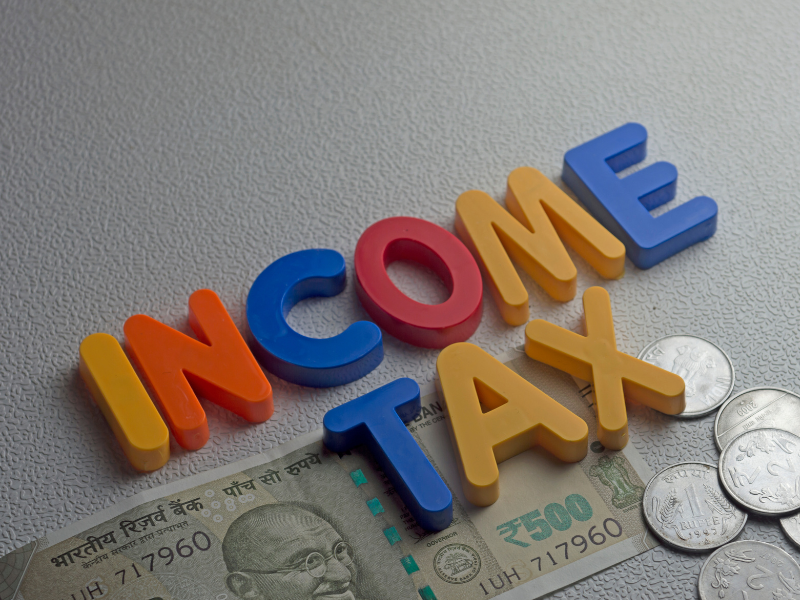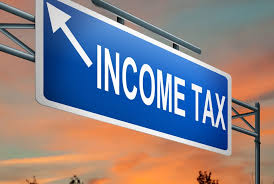Income Tax in India: A Comprehensive Guide
Income Tax in India-Income tax is a fundamental aspect of a country’s fiscal policy, and India is no exception. It is the financial contribution that individuals and businesses make to the government, which is crucial for funding public services, infrastructure development, and various welfare programs. In this article, we will explore the intricacies of income tax in India, including tax rates, exemptions, and the process of e-filing for Income Tax in India
How Much Income Tax is Levied in India? Income Tax in India
Income tax in India is levied based on the income earned by individuals and entities during a financial year (April 1 to March 31). The tax rates vary depending on the income slabs, with higher-income brackets subject to higher tax rates. As of my knowledge cutoff in September 2021, here is an overview of the individual income tax slabs for taxpayers below 60 years of age:
Income up to ₹2.5 lakh: No income tax (Tax Rebate under Section 87A available for income up to ₹5 lakh).
Income from ₹2,50,001 to ₹5 lakh: 5% of income exceeding ₹2.5 lakh.
Income from ₹5,00,001 to ₹10 lakh: 20% of income exceeding ₹5 lakh + ₹12,500.
Income above ₹10 lakh: 30% of income exceeding ₹10 lakh + ₹1,12,500.What is the Tax Rate for a ₹40 Lakh Salary in India?
For an individual earning a salary of ₹40 lakh annually, the applicable tax rate would be as follows:
– Income up to ₹2.5 lakh: No tax
– Income from ₹2,50,001 to ₹5 lakh: 5% of ₹2,50,000 (₹12,500)
– Income from ₹5,00,001 to ₹10 lakh: 20% of ₹5,00,000 (₹1,00,000) + ₹12,500
– Income from ₹10,00,001 to ₹40 lakh: 30% of ₹30,00,000 (₹9,00,000) + ₹1,12,500The total income tax liability for a ₹40 lakh salary would be ₹12,25,000.
How Much Income is Tax-Free in India?
As of the financial year 2021-22, the first ₹2.5 lakh of an individual’s income is tax-free, thanks to the basic exemption limit. Additionally, there is a rebate under Section 87A, which provides a tax benefit of up to ₹12,500 for individuals with an income of up to ₹5 lakh.
Which Tax is High Income in India?
In India, the highest income tax rate is 30%, which applies to individuals earning an annual income exceeding ₹10 lakh. This rate is often referred to as the highest tax bracket. High-income individuals also face additional cess and surcharge based on their income levels, making their effective tax rate slightly higher.
Income Tax E-filing in India
Income tax e-filing is the process of electronically filing your income tax return (ITR) online. It is a convenient and efficient way to file your tax returns, with various benefits such as faster processing, reduced paperwork, and the ability to file from the comfort of your home. Here’s a simplified guide on how to e-file your income tax return in India:
Register on the Income Tax Department’s Website: Visit the official website of the Income Tax Department of India (https://www.incometaxindiaefiling.gov.in/) and create an account if you haven’t already.
Gather Relevant Documents:Collect all the necessary financial documents, including your Form 16, bank statements, and investment details.
Choose the Appropriate ITR Form:Select the correct ITR form based on your income sources and financial situation.
Fill in the Details: Complete the ITR form with accurate information, ensuring that you declare all your income, deductions, and exemptions.
Verify and Submit:Review the filled form and submit it. After submission, you will receive an acknowledgment in the form of an ITR-V, which should be verified promptly.
E-verify or Send Signed ITR-V:You can e-verify your ITR using various methods like Aadhar OTP, net banking, or sending the signed ITR-V to the CPC (Centralized Processing Center) by post.
Additional Tax Exemptions and Considerations for Indian Taxpayers
In addition to the previously mentioned tax benefits, exemptions, and considerations, there are several more facets of the Indian income tax system that taxpayers should be aware of:
Senior Citizen and Super Senior Citizen Tax Benefits:
Senior Citizen Exemption:Individuals above the age of 60 and below 80 years are considered senior citizens. They enjoy higher exemption limits and additional deductions, making their tax liability lower. For instance, senior citizens can claim higher deductions on medical expenses and receive exemptions on interest income.
Super Senior Citizen Exemption:Individuals above the age of 80 are classified as super senior citizens. They enjoy even higher exemption limits and deductions. Their income up to ₹5 lakh is exempt from tax, and they can claim deductions for medical expenses, among other benefits.
Deductions Under Section 80DDB:
Taxpayers can claim deductions under Section 80DDB for expenses related to the treatment of specific diseases for themselves or their dependents. The deduction limit varies based on the age of the taxpayer and the patient.
Standard Deduction for Salaried Individuals:
– Salaried individuals can avail of a standard deduction of ₹50,000 on their taxable income under Section 16 of the Income Tax Act.
Exemptions for House Rent Allowance (HRA):
Employees who receive HRA as part of their salary can claim exemptions based on actual HRA received, rent paid, and the city of residence.
Tax Deductions for Donations:
Taxpayers can claim deductions under Section 80G for donations made to specified charitable institutions, providing an incentive for philanthropy.
Tax on Agricultural Income:
Agricultural income in India is generally exempt from income tax. However, income generated from agricultural practices that go beyond traditional farming, such as agribusiness or large-scale commercial activities, may be subject to taxation.
Tax Deductions for Persons with Disabilities:
Individuals with disabilities and their guardians can claim deductions under Section 80U for disability-related expenses and benefits.
Capital Gains Tax Benefits:
Taxpayers can avail of various exemptions and deductions on capital gains from the sale of assets like real estate and shares. Sections like 54, 54F, and 54EC provide relief from capital gains tax in specific scenarios.
NPS and EPF Benefits:
Contributions to the National Pension System (NPS) and the Employees’ Provident Fund (EPF) offer tax benefits under Sections 80CCD and 80C, respectively.
Tax Deductions for Home Loan Repayments:
Home loan borrowers can claim deductions under Sections 24(b) and 80EE on the interest paid on home loans and the principal amount repaid.
Taxation of Foreign Income:
Indian residents who earn income abroad may avail of foreign income tax credits or exemptions, depending on their tax residency status and the Double Taxation Avoidance Agreement (DTAA) between India and the foreign country.
Confirmation:Once your ITR is successfully verified or the signed ITR-V is received and processed by the CPC, you will receive an acknowledgment confirming the filing of your income tax return.
Income tax in India is a complex but essential aspect of the financial landscape. Understanding the tax rates, exemptions, and e-filing procedures can help individuals and businesses fulfill their tax obligations efficiently while also optimizing their financial planning. It’s important to stay updated on any changes in tax laws and regulations to ensure compliance and make informed financial decisions.
#Income Tax in India
Source: Home




